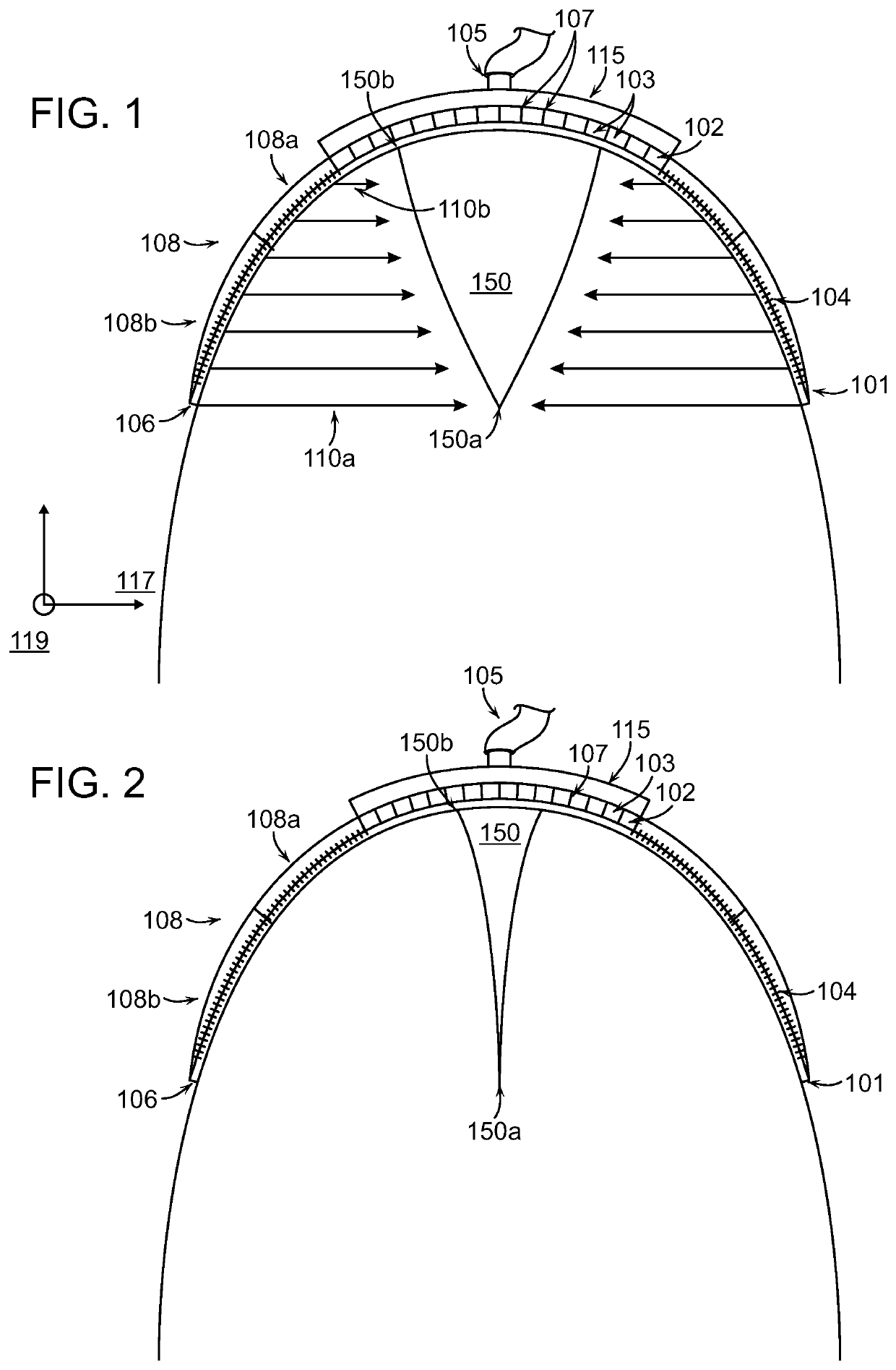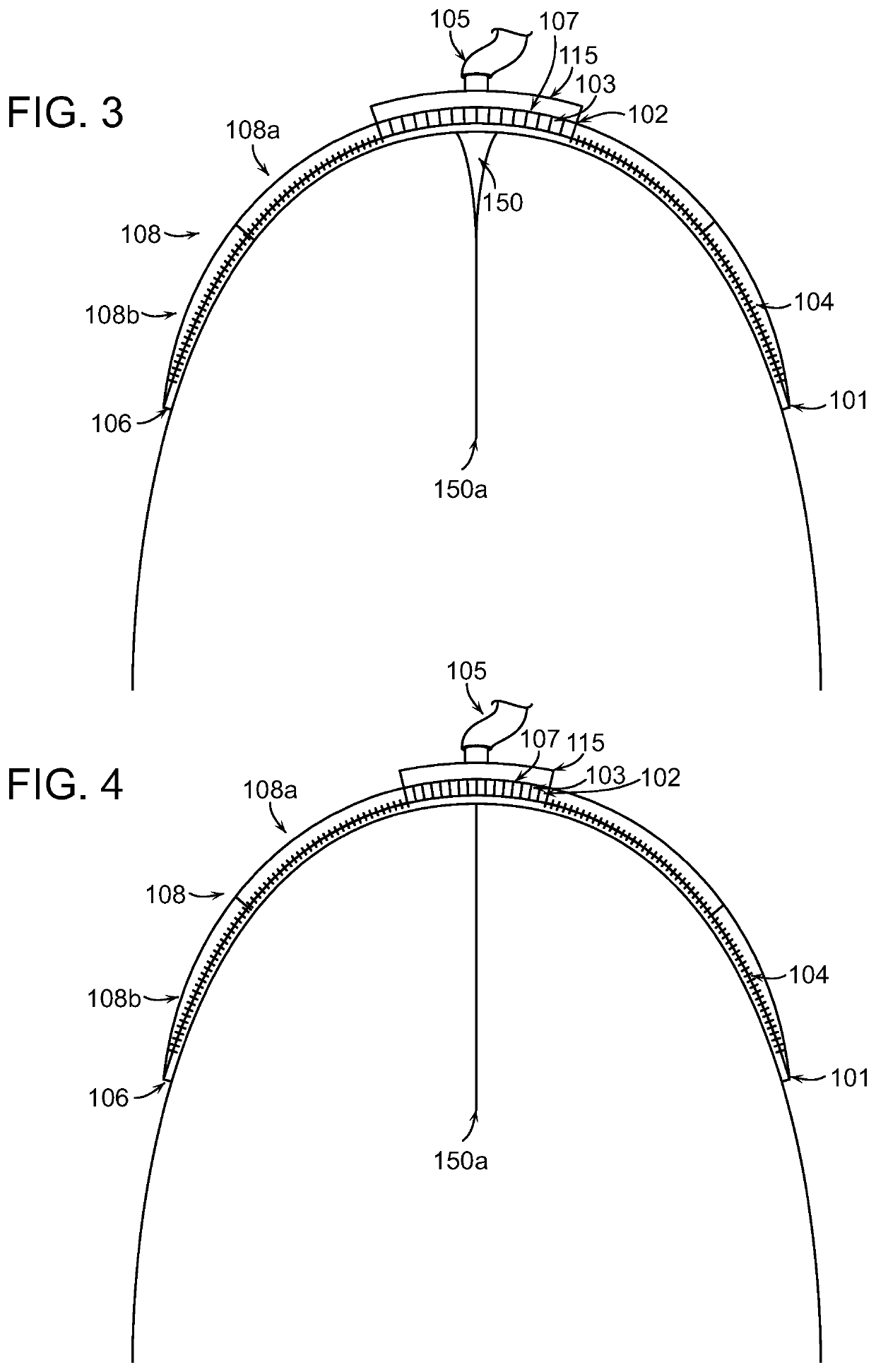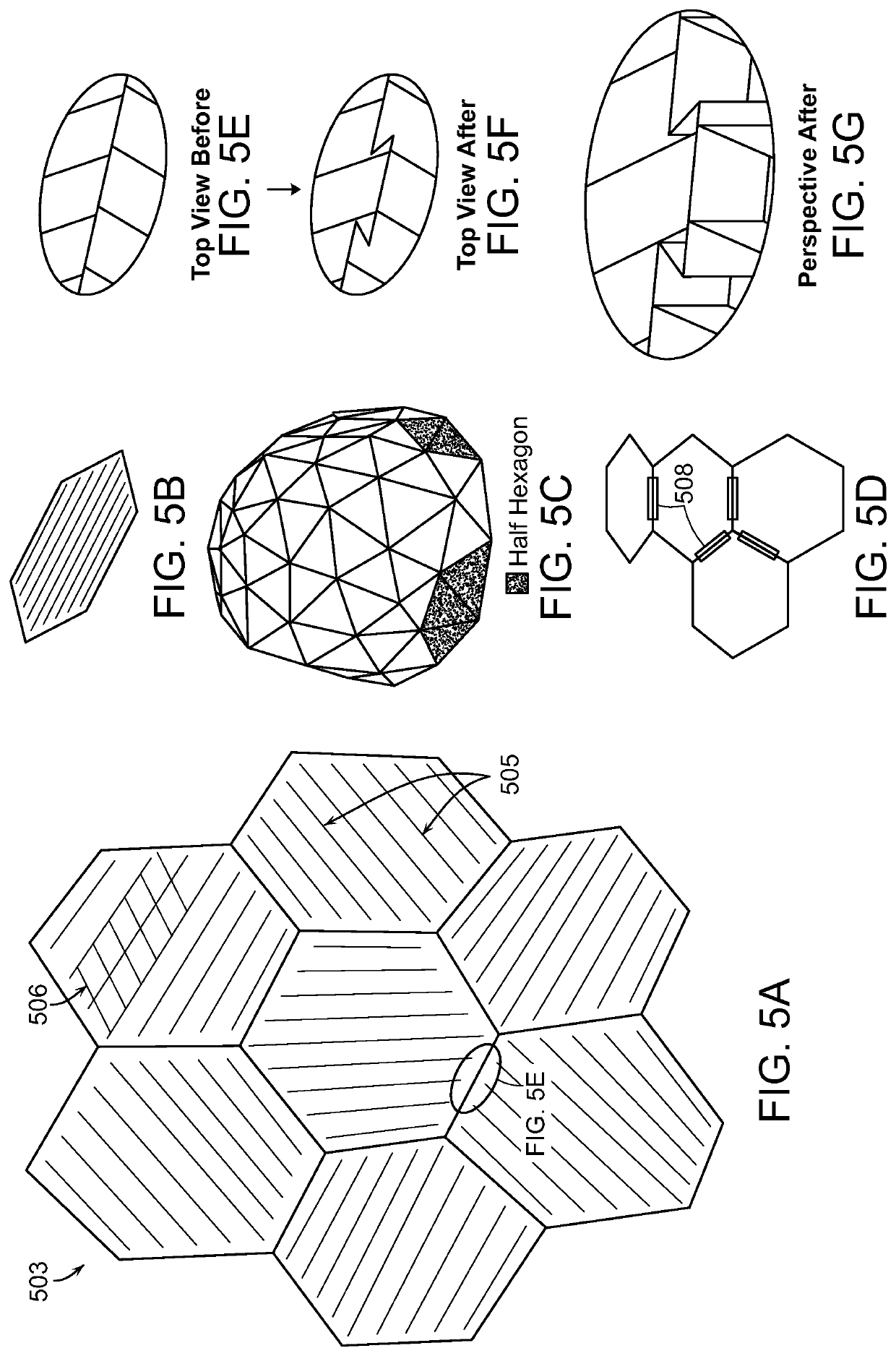Negative pressure wound closure devices and methods
a wound closure and negative pressure technology, applied in the field of negative pressure wound closure devices and methods, can solve the problems of tissue necrosis at the body extremities, limited effectiveness of existing techniques, and significant problems in tissue and wound drainage reapproximation and drainag
- Summary
- Abstract
- Description
- Claims
- Application Information
AI Technical Summary
Benefits of technology
Problems solved by technology
Method used
Image
Examples
Embodiment Construction
[0041]Embodiments of the present invention relate to negative pressure wound closure devices, systems, and methods for wounds resulting from amputation or other open wound in which the wound margins undergo rotation to align and close. The embodiments as described herein include a negative pressure source and a compression structure that is placed on the wound to provide directed preferential closure. The compression structure can include a number of cells separated by rigid or semi-rigid membranes that are hinged together at joints. The structure changes conformation during a procedure to facilitate closure of the wound.
[0042]FIGS. 1-4 illustrate cross-sections of a wound closure device 100 applied at a body extremity to a wound 150 caused by amputation. The wound closure device 100 can include a compression structure 102, an inlet 105, and flaps 108. The wound closure device 100 can have a dome-shaped geometry in order to extend around the limb in such a way that the peripheral ed...
PUM
 Login to View More
Login to View More Abstract
Description
Claims
Application Information
 Login to View More
Login to View More - R&D
- Intellectual Property
- Life Sciences
- Materials
- Tech Scout
- Unparalleled Data Quality
- Higher Quality Content
- 60% Fewer Hallucinations
Browse by: Latest US Patents, China's latest patents, Technical Efficacy Thesaurus, Application Domain, Technology Topic, Popular Technical Reports.
© 2025 PatSnap. All rights reserved.Legal|Privacy policy|Modern Slavery Act Transparency Statement|Sitemap|About US| Contact US: help@patsnap.com



